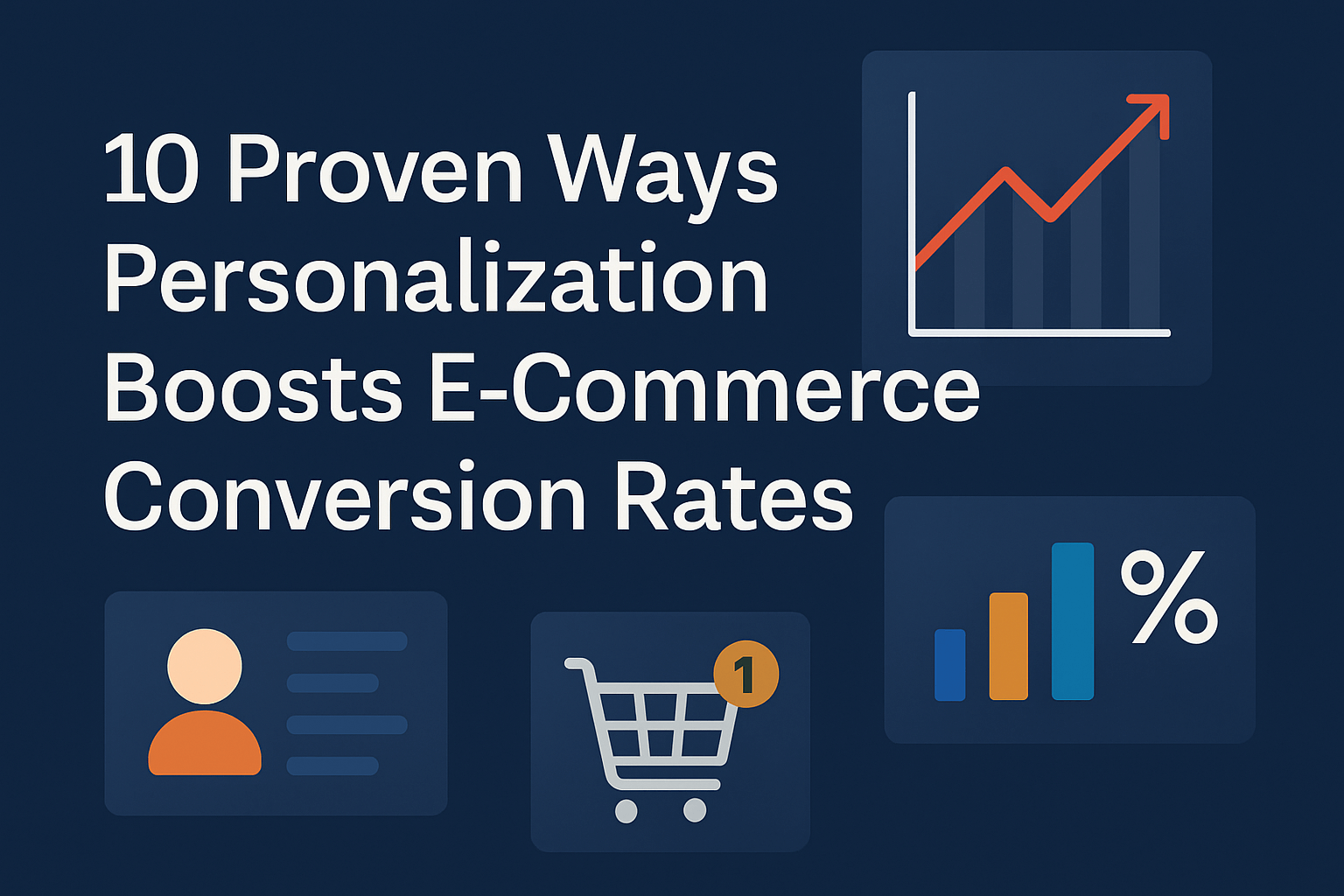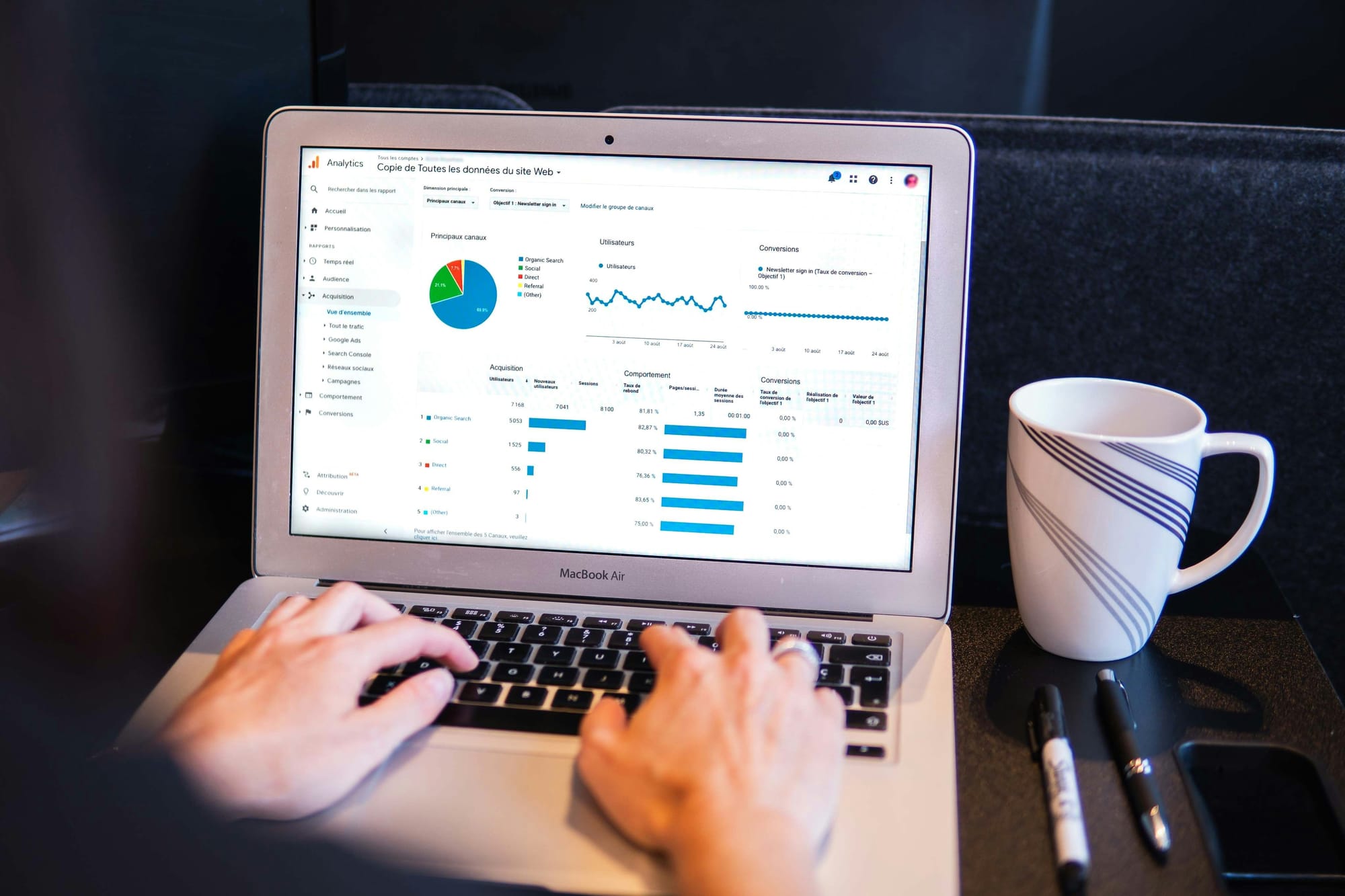How to measure and improve your online store’s performance - top 10 benchmarks for ecommerce sites
Understanding your website’s performance compared to industry standards is crucial for identifying growth opportunities. Measuring key metrics helps online businesses determine their strengths and weaknesses, optimize performance, and make data-driven decisions.
We’re covering the top 10 benchmarks for ecommerce sites, providing insights on how to improve your store's efficiency and profitability. We’ll also touch on metrics such as the average ecommerce conversion rate to give you a clear sense of where your business stands.
Top 10 benchmarks for ecommerce sites
1. Average ecommerce conversion rate
One of the most critical ecommerce benchmarks is the average ecommerce conversion rate - the percentage of website visitors who complete a desired action, such as making a purchase. Across all industries, the average conversion rate for ecommerce websites ranges between 1.8% to 3%, though this can vary depending on sector.
Tips for improvement:
- Streamline the checkout process - remove any friction, such as unnecessary form fields, that can deter users from completing their purchase
- Optimize for mobile – make sure your mobile site is fully optimized for smooth browsing and quick transactions, as mobile shopping continues to rise
2. Average Order Value (AOV)
The average order value (AOV) measures how much a customer spends per transaction. This is an essential benchmark because increasing AOV directly boosts revenue without increasing customer acquisition costs.
Tips for improvement:
- Cross-sell and upsell - suggest complementary products during checkout
- Offer free shipping thresholds - encourage customers to spend more to qualify for free shipping, pushing up the average order value
3. Customer Lifetime Value (CLV)
Customer Lifetime Value (CLV) is a projection of the total revenue a business can expect from a single customer over the course of their relationship. High CLV indicates a loyal customer base and efficient retention strategies.
Tips for improvement:
- Loyalty programs – introduce a loyalty program to encourage repeat purchases
- Email marketing - use email campaigns to nurture relationships and keep customers coming back
4. Cart abandonment rate
Cart abandonment is one of the most frustrating challenges for ecommerce businesses. The average cart abandonment rate across industries is around 69.57%, meaning that a significant portion of potential sales are lost during the checkout process.
Tips for improvement:
- Simplify the checkout process - make sure the checkout is intuitive and easy to navigate
- Send cart abandonment emails - use automated email campaigns to remind customers to complete their purchase, you could even try adding a small discount or incentive
5. Customer Acquisition Cost (CAC)
The customer acquisition cost (CAC) measures how much it costs to acquire a new customer through your marketing efforts. Understanding your CAC is key to maintaining profitability, especially as advertising costs rise.
Tips for improvement:
- Leverage organic channels - use SEO and content marketing to attract customers organically, reducing reliance on paid channels
- Ad targeting: Introduce or refine paid advertising strategies to ensure you're reaching the right audience, minimizing wasted spend
6. Bounce rate
Bounce rate refers to the percentage of visitors who leave your site after viewing just one page. A high bounce rate often indicates that your landing pages aren't meeting visitor expectations or that the site is difficult to navigate.
Tips for improvement:
- Optimize landing pages - ensure that your landing pages are highly relevant to the ads or search queries that brought users there
- Improve page load speed - a slow-loading site can drive visitors away before they even see your content. Use tools like Google PageSpeed Insights to identify and fix speed issues
7. Repeat purchase rate
The repeat purchase rate measures how often customers return to make additional purchases. Higher repeat rates indicate strong customer loyalty and satisfaction.
Tips for improvement:
- Email campaigns - keep your brand top of mind with personalized, engaging email marketing
- Offer post-purchase discounts - encourage repeat purchases by offering discounts on future orders after a customer’s first purchase
8. Site speed and performance
Site speed is a crucial ecommerce benchmark because it directly impacts user experience, bounce rate, and conversions. According to studies, even a 1second delay in load time can result in a 7% decrease in conversions.
Tips for improvement:
- Image optimization - compress images to improve load times without sacrificing quality
- Use a CDN - a Content Delivery Network (CDN) can speed up your website by distributing content across multiple servers globally
9. Return on Ad Spend (ROAS)
Return on Ad Spend (ROAS) measures the effectiveness of your advertising campaigns by comparing revenue generated to the amount spent on ads. A healthy ROAS indicates that your paid marketing efforts are driving sufficient revenue to justify the investment.
Tips for improvement:
- Refine audience targeting - use data from existing customers to better target new audiences with similar characteristics
- Focus on high-converting campaigns - regularly analyze which campaigns or platforms generate the most conversions and allocate more budget accordingly
10. Website traffic to conversion rate
Finally, understanding the ratio between your website traffic and your conversion rate is crucial. This metric tells you whether you're attracting the right audience and whether your website is effectively turning visitors into buyers.
Tips for improvement:
- Improve product pages – make sure your product pages have detailed descriptions, high-quality images, and reviews to build buyer confidence
- Personalize the user experience - using ecommerce personalization techniques, such as showing recommended products based on browsing behavior, can increase conversions
Track your ecommerce benchmarks for growth
Monitoring these ecommerce benchmarks is critical for making sure your online store is running at peak efficiency. Whether it’s improving the average ecommerce conversion rate or boosting customer lifetime value, understanding and acting on these metrics will help you identify areas of improvement, optimize your site, and ultimately increase sales.
By consistently analyzing your performance across these benchmarks, you can create a strategy that ensures sustained growth and profitability for your ecommerce business.
-

10 Proven Ways Personalization Boosts E-Commerce Conversion Rates
-

How to increase your website sales
-

Mastering ecommerce product page optimization
-

Ecommerce content optimization - strategies to drive conversions
-

Product page SEO best practices
-

Create a winning ecommerce strategy
-

Ecommerce optimization - strategies to boost your online store's performance
-

Ecommerce best practices - how to enhance performance, attract customers, and grow sales
-

How to increase online sales - proven strategies to boost your business
-

How to market a product online - proven strategies for success

